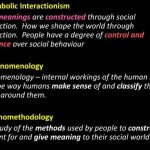
Table of Contents
- 1 Types and Forms
- 2 Based on marriage, families have been put into three main groups:
- 3 Families can be broken down into three main types based on where they live:
- 4 Families can be put into two main groups based on where they came from:
- 5 Families can be divided into two main types based on how big they are, how they are set up, and how many generations they have:
- 6 Based on how the family members interact with each other, there are two main kinds of families:
- 7 Sociology has looked at two common types of family in detail:
- 8 Joint Family:
- 9 The social side:
- 10 Political Aspect
- 11 The economic side:
- 12 Aspects of religion:
- 13 Cultural Aspects:
- 14 Nuclear Family:
- 15 Social Aspect:
- 16 Political Aspect:
- 17 The economic side:
- 18 Aspects of religion:
- 19 Miscellaneous:
- 20 Changes in family organisation in industrial societies are caused by:
- 21 Industrialization:
- 22 Modernization
- 23 Secularization:
Types and Forms
Based on marriage, families have been put into three main groups:
- Family with more than one man or woman
- Family of Polyandrous
- One man, one woman
Families can be broken down into three main types based on where they live:
- Family living with the mother
- Home of the patrilocal family
- Family moving to a new home
Families can be put into two main groups based on where they came from:
- Mother-to-daughter queue
- Family that goes back to the father
Families can be divided into two main types based on how big they are, how they are set up, and how many generations they have:
- Nuclear family or the one-person family
- Mixed family
Based on how the family members interact with each other, there are two main kinds of families:
- The married family is made up of adults who have sexual relationships with each other. ( conjugal family)
- Consanguine family is a group of people who are related by blood, such as brother and sister, father and son, etc.
Sociology has looked at two common types of family in detail:
Joint Family:
Relationship Solidarity: In joint families, the relationship solidarities are mostly with blood relatives or brothers, not with other close friends. This is why these families are called consanguineous families. All of the housework is done by the daughter-in-laws because they don’t do much in the family. When talking about the mixed family in India, S.C. Dubey says that any married woman used to stay at her parents’ house after getting married.
Members’ Importance: In a joint family, the family as a whole is more important than any one person. The way decisions are made shows how important something is. These decisions can be about small things or very important things, which is why choices about marriage are also made at the family level.
Marriage Alliance: It is done at the family level, not the individual level, which is why it is said that marriage ties are always made between two families. In these kinds of families, both the husband and wife are related to different people in different ways. This means that they don’t see each other very often, so they rarely fight. Elizabeth Bott wrote about this problem in her study of some families in Greater London, and Rosser and Harris wrote about it in their article “Degree of domesticity of women involved?
Political Aspect
In terms of power, the patriarchal family puts power in the hands of men, while the matriarchal family puts power in the hands of women. In every family, someone is chosen to be the head. This person speaks for the whole family, so the decisions he makes are the decisions of the whole family as a whole.
The economic side:
In the context of dividing up work: Here, the work is mostly split up by age and gender. So, men used to work outside while women did housework inside a wall. Talent and skill didn’t matter at all as far as work was concerned. In her study of British society, feminist scholar Ann Oakley shows that before industrialization, the family was the main unit of production. Where women did most of the housework, like cooking, cleaning, washing, taking care of children, and other things like making milk. In other words, they did things that weren’t necessary, but industrialization changed their roles, and now they have the “dominant mature female role.”
In terms of property ownership, in a shared family, the property is owned by everyone, so no one person can own it alone.
Aspects of religion:
In blended families, religious practises are important for everyone and are done together. In this way, no one can have a personal interest in this field.
Cultural Aspects:
In the context of functions: In joint families, different kinds of functions used to happen, which people did either by following rules or by doing Sankaras, and the whole thing was done as a group.
In terms of where they live, the whole family lives together under one roof, and they all use the same kitchen.
Nuclear Family:
Social Aspect:
Solidarity of Relationships: The final connection is very important to the solidarity of relationships. In this way, blood ties don’t matter that much. So, this kind of family is called a “conjugal family.” However, there is another reason to believe that this kind of family exists: the ego has already grown apart from its blood cousins.
Every person of this family is important, so no one is forced to do what another member wants. I.e., each person is free, independent, and important in his or her own way. Even when making choices about marriage, the importance of individual freedom is clear, since the decision is only made by people who are related to each other. In the industrialised west, everyone is free to do whatever they want. On this subject, but in places like India, where traditions are still strong, the structure of a nuclear family is different from what you’d find in the West, and people don’t have complete freedom when it comes to making choices about marriage.
Political Aspect:
Everyone has the same rights in a close family. In these kinds of homes, children are just as important as adults when it comes to making decisions. This kind of family is called a filiocentric family. Authorities aren’t put into place by forcing people to do so. Instead, they are put into place by getting everyone to agree, which is done through debate.
The economic side:
Most of the time, people do different jobs based on their skills and abilities, not on their age or gender. Because of this, in nuclear families, the jobs of husband and wife are shared, while in joint families, they were kept separate. Elizabeth Bott and Rosser & Harris wrote more about this fact and showed that it was true. Modern rules decide who owns a family’s property, and if each member earns their own property, that person would be the owner of that property.
Aspects of religion:
In western countries and for nuclear families, S.C. Dubey has shown in his analysis that people’s trust in supernatural things and powers has decreased as science and technology have grown. In contrast to faith, they began to solve their problems in a very logical way through science and technology. People and the government were able to accept secular ideas because of this change. Now, religious activities are no longer important, necessary, or required for members of a family.
Miscellaneous:
How important outside forces are: MacIver has looked at the nuclear family as the unit of consumption. So, whether it’s to help kids make friends or have fun, they need help from outside sources because they can’t get the goods and services they need from their own families. This is because every person of a nuclear family becomes an expert in one area. For other services and goods, he has to rely on other people. T. gave a more detailed explanation of why this is the case. Parsons and William J. Goode looked at industrial cultures in their work.
Improved position of women: The rise of equality, freedom, and the right to make decisions has made patriarchy weaker as a whole. The position of women keeps getting better. The economic freedom of women has a lot to do with it. Ann Oakley has called this kind of change in the women a “dominant, mature female role.”
Increase in Individuality: This is the exact opposite of Durkheim’s idea of collective awareness, in which everyone thinks the same way because tradition is so important. And the same thing happens in the joint family of simple society before industrialization. Individualism is the norm in modern married families, which helps the people do well financially. But its problems show up in the form of anomie, which makes people feel disconnected and separate from their families. On top of that, crime, cybercrime, drug addiction, alcoholism, prostitution, youth delinquency, etc. are all on the rise. One more important thing about individuality is that people have more personal freedom because they don’t have to deal with pressure from their families or the government. In the end, these kinds of families are becoming more independent and democratic.
Changes in family organisation in industrial societies are caused by:
After the science and industrial revolutions, western society’s patriarchal joint families began to change into individualistic nuclear families. It was important for the people to have this kind of family organisation because it fit well with the whole ecosystem. It does a lot of important things and gets rid of a lot of other things that aren’t as important. There are a lot of things that have caused this kind of change, but development has been the biggest and most important one. Overall, you can add up the following factors:
- Industrialization
- Modernization
- The Role of Science and Technology in Secularisation
Industrialization:
Important people like T. Parsons and William J. Goode have written about how industry led to the rise of nuclear families. Parsons says that the average family in today’s industrial society is a small, nuclear family that lives alone. It is structurally separate because it is not a part of a larger network of family relationships. T. Parsons says that a modern industrial system with a division of labour that focuses on specialisation needs a large number of workers who can move around a lot. People with specialised skills need to move to places where those skills are needed. The idea of a small, self-contained family fits with the need to move around. This is how you could explain it:
It doesn’t have a lot of kin in its system, so a lot of obligations are cut down. So the responsibilities are mostly on the husband, wife, and child, and they make a strong bond between them.
Parsons says that the isolated nuclear family is the best way for a society based on earned standing to be organised. Because people are judged based on the status they have reached.
The pre-industrial society had a particularistic value system, which meant that the system was based on what people thought was right. Because of this, there were often disagreements in families that were bigger than the nuclear family, which made it hard for the family to stay together. The separated nuclear family keeps the problem from getting worse for the most part.
In a small, isolated nuclear family, the tasks of the family can be done better. For example, a mother and wife who are expressive can help children learn how to get along with other people and help adults keep their personalities stable.
Ronald Fletcher, who agrees with Parsons, says that the family still does what it used to do, but now it does it better and with more care. Specialised organisations like schools and hospitals haven’t taken the place of families, but have made them better. Now, parents are the best people to help their kids with their jobs and their health. They are their guides on the path to success.
Parsons says that the family as a whole has almost lost all of its functions. But that doesn’t mean that the modern family is less important; in fact, it’s become more essential. Now, they are working on the greater society’s integration and economic system. And in that way, it is doing what it should be doing.
William J. Goode: Like Parsons, Goode says that industrialization tends to hurt the extended family and bigger kinship grouping. He says that the fact that people move around a lot in modern societies makes it harder for family members to keep in touch and get to know each other. When there is a relatively high amount of social mobility, family ties tend to weaken as well.
For example, when a person from a working-class family moves up in the world, he or she often takes on the lifestyle, attitude, and beliefs of his or her new social class. They would make it hard for him to get in touch with his working-class family. Many of the jobs that used to be done by the family are now done by schools, businesses, and groups that help people. This makes the person less dependent on his family and friends. In an industrial society, where status is important, family and kinship groups have less to give their members. People started having nuclear families because of this, which fits with the new modern society.
It had such a big effect that even people who didn’t work in factories used it. Goode has found that families in the industrial upper class have a joint family framework, but they are not really one mind or heart. Goode uses the idea of “role bargaining” to help these kinds of families deal with this. It means that the person tries to get the best deal possible in his relationships with other people. He will try to make as much money as possible. He stays friendly with his family and lets them control him if he thinks he’s getting a good return on the time, energy, and feelings he puts into them. Goode says that the new system is not so much incompatible with industry and the extended family as it offers a different way to pay for things. But because there is a lot of freedom and equality in this kind of family, it works like a nuclear family in the end.
Modernization
Role of Education: Because modern society has changed so much, education has also played a very important part. People have given up superstitions and stuck-to-their-ways because of modern schooling. They now know their rights and are very aware. If people didn’t have access to modern education, they wouldn’t be able to specialise in their jobs. This shows that modern education gives people opportunities to move up in society.
Before the Industrial Revolution, society was split into top and lower classes, and not everyone had the same opportunities. But this is now possible in industrial societies, where even children from the middle class can rise up the social ladder.
In his positional theory, French sociologist Raymond Boudon says that a working-class boy has a higher position and more mobility than his father because he chooses the right education path. By changing his mobility, he also changes the structure of his family, which can be seen in the form of a nucleus family.
Changes in the law: Over time, different kinds of laws have been passed that have made women’s lives better. Now that these women know they have the right to equal rights and freedom, they are very demanding. Which can only be done in a traditional nuclear family. Ailleen Ross has said more about this in the framework of the Indian family system.
Changes to the political system: This gives everyone freedom and equal rights. Goode thinks that because of this right and freedom, the number of nuclear families has grown to a very high level, which has been seen in nonindustrial western countries. Kenneth Little’s study of the movement of people from rural, kinship-based societies to urban, industrial societies in West Africa backs up this point. He found that many people who moved to the cities were happy to be free of their obligations to their kin.
Change in ideas: Ann Oakley has painted a picture of how modernization has given women new roles in British society. Now, they have a job as a strong, mature woman. Before Britain became industrialised, the family was a key unit of output. In terms of their basic needs, people needed marriage and families. Because everyone in the group worked on making the album. In both the industrial and textile industries, women played important roles. But now, the same family has become a unit of consumption, and women are working to make money, which has made the organisation of the nuclear family stronger.
Changes in mass communication: This has made people much more aware and mobile, and it has also changed the way families work.
Secularization:
The health of the population has improved, so most people now have one or two children. This means that the average family size has gone down, which has led to the structure of the nuclear family in western countries. With the help of legal or illegal technology, people in India have also come to accept having one or two children as the standard. This has led to the rise of the “nuclear family,” which is made up of just one or two people.
















